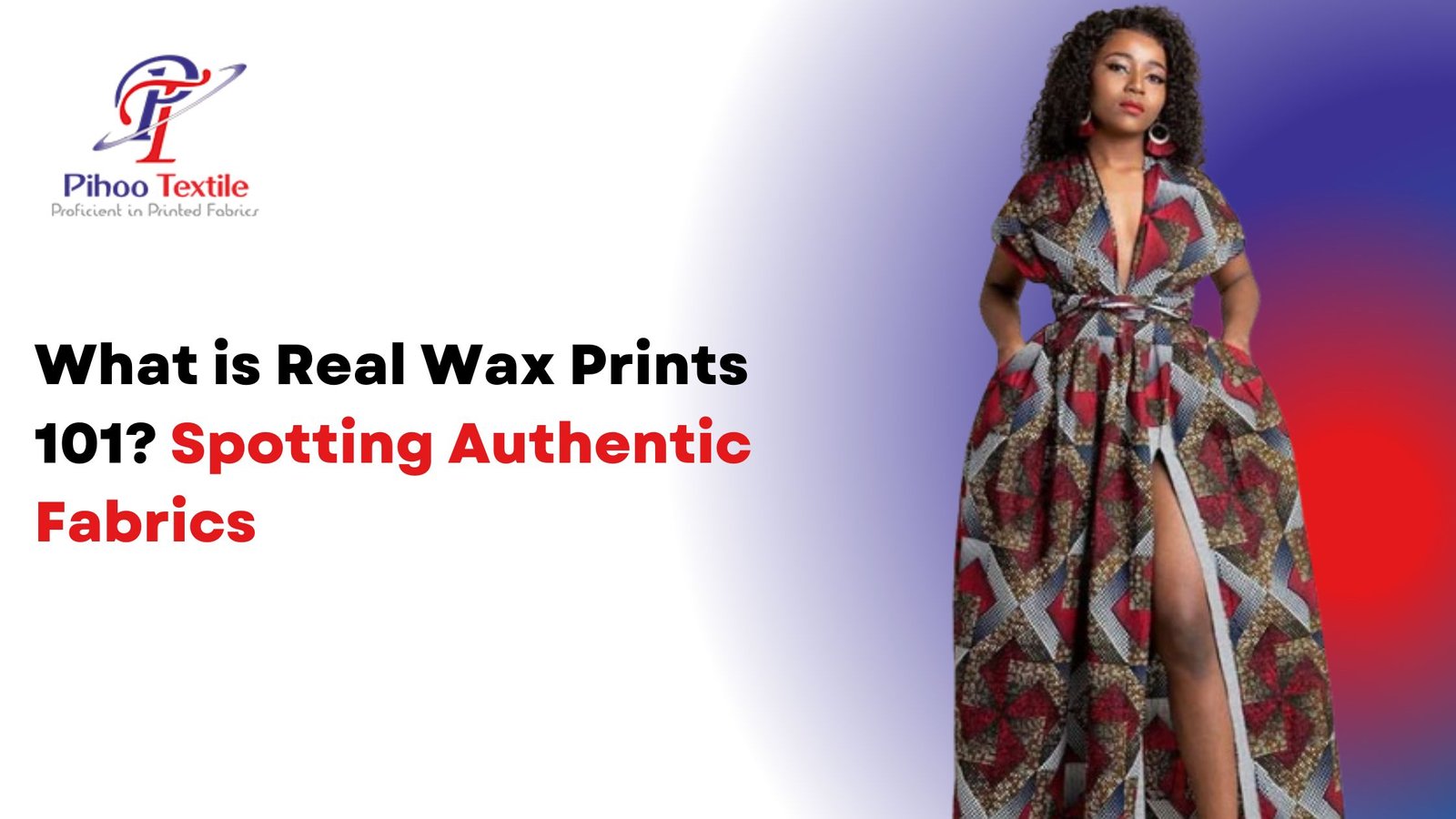What is Real Wax Prints 101? Spotting Authentic Fabrics
Most fabric buyers think all wax prints are created equal. They’re not. The market floods with counterfeits that fade after three washes, feel stiff as cardboard, and carry blurry patterns that betray their inauthenticity the moment you hold them up to light.
Real wax prints stand apart. They carry weight, history, and a production method that dates back centuries yet adapts to modern machinery. This guide walks you through what makes authentic wax fabric authentic, how to spot the difference between genuine and fake, and why that difference matters when you’re putting your money down.
We’ll cover what real wax prints are, the telltale signs of authenticity, common counterfeit red flags, and how to make smart buying decisions. By the end, you’ll know exactly what to look for when you’re standing in front of a fabric vendor.
What Are Real Wax Prints?
Real wax prints use a wax-resist dyeing process rooted in Indonesian batik techniques. Dutch colonizers adapted the method, mechanized it, and introduced it to West Africa, where it became a cultural staple. The fabric passes through multiple dye baths with wax applied between each stage to create intricate, multi-colored patterns.
Modern production maintains this tradition but uses machines to apply wax with precision. The result is 100% cotton fabric with designs that show depth, vibrancy, and those signature “ice cracks”—fine lines where wax naturally fractures during the dyeing process. These cracks aren’t flaws. They’re proof of authenticity.
The fabric feels soft, flexible, and substantial in your hand. It doesn’t crinkle like paper or feel synthetic. This tactile quality separates real wax from the imitations flooding online marketplaces.
How to Identify Authentic Wax Prints?
Check the Fabric Composition
Authentic wax prints use 100% high-quality cotton. The fabric should feel smooth, breathable, and slightly heavy. If it feels stiff, synthetic, or unnaturally light, walk away.
Run your fingers across the surface. Real wax fabric has a subtle texture that speaks to its cotton base and the layers of wax and dye. Counterfeits often use cotton blends or polyester that feel slick or papery.
Examine Print Quality
Look at the pattern closely. Authentic wax prints show crisp lines, vibrant colors, and intricate details that hold up under scrutiny. The design should look identical on both sides of the fabric, with equal color saturation.
Check for ice cracks. These thin, irregular lines run through the design where wax fractured during production. Counterfeits lack this feature because they skip the wax-resist process entirely and use direct printing instead.
Inspect the Selvedge
The selvedge—the finished edge running along both sides—carries manufacturer marks, design codes, and sometimes the fabric name. Authentic producers stamp this information along the edge.
Missing or poorly printed selvedge details signal a counterfeit. If the edge looks raw, unstamped, or shows inconsistent printing, you’re looking at a fake.
Consider the Price
Real wax prints cost more than standard cotton because the production process demands time, skill, and quality materials. If a seller offers prices far below market average, that’s a red flag.
Cheap fabric means cheap shortcuts. Counterfeiters use inferior cotton, skip the wax process, and mass-produce direct prints that mimic the look without the substance.
Common Counterfeit Warning Signs
Blurry patterns give fakes away immediately. The colors bleed into each other, lines lose definition, and the design looks flat rather than layered. Real wax prints maintain clarity even in the most complex patterns.
Uneven color distribution across the fabric surface indicates poor dye application. Authentic wax prints show consistent color intensity throughout. Fading or discoloration after one wash confirms you bought a counterfeit.
Harsh, stiff fabric texture means synthetic materials or low-grade cotton. Real wax prints soften with each wash while maintaining their structural integrity.
Why Authenticity Matters
Real wax prints last years, not months. The wax-resist process embeds dye deep into the cotton fibers, creating colorfastness that survives countless washes. Counterfeits fade, fray, and lose their appeal within weeks.
The cultural weight matters too. Authentic wax prints carry design heritage, symbolic meanings, and artistic traditions passed down through generations. Wearing real wax fabric means participating in that legacy.
Quality affects your final product. If you’re making garments, bags, or home goods, authentic fabric ensures your work reflects craftsmanship rather than compromise.
Making Smart Purchases
Buy from established suppliers with verifiable credentials. Check reviews, ask for fabric samples, and verify selvedge stamps before committing to bulk orders.
Request close-up photos if buying online. Zoom in on the pattern, check for ice cracks, and examine the selvedge details. Legitimate sellers provide these without hesitation.
Touch the fabric in person when possible. No photo captures texture the way your hands can. If you’re investing in quantity, that tactile verification saves you from costly mistakes.
Conclusion
Spotting authentic wax prints comes down to knowing what to look for: 100% cotton composition, crisp patterns with ice cracks, proper selvedge stamps, and realistic pricing. Counterfeits reveal themselves through stiff texture, blurry designs, and missing manufacturer details.
Pihoo Textile supplies authentic wax prints with verified quality standards and traditional production methods. Our fabrics carry the weight, texture, and vibrancy that define real wax prints. Visit pihootextile.com to explore our collection, request samples, or place your order. Get fabric that lasts and carries the heritage it promises.


